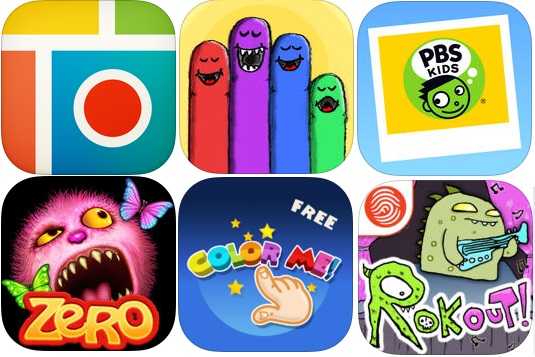MOOC uses new AP Physics curriculum, could aid both students and teachers
 A free online course from Rice University uses attention-grabbing videos, interactive lab activities, dramatic physics demonstrations, engaging instructors and a free online textbook to help high school students prepare for the Advanced Placement (AP) Physics 1 Exam.
A free online course from Rice University uses attention-grabbing videos, interactive lab activities, dramatic physics demonstrations, engaging instructors and a free online textbook to help high school students prepare for the Advanced Placement (AP) Physics 1 Exam.Rice officials said the new four-part course, Preparing for the AP Physics 1 Exam, is like no other massive open online course (MOOC) the university has offered because it features high production values, dozens of visual demonstrations, Hollywood-style introductory videos for key concept areas and access to a free textbook from Rice University-based publisher OpenStax College.
“Our approach with this MOOC is to provide university-style concept lectures with problem-solving strategies from expert AP physics teachers,” said award-winning Rice physicist Jason Hafner, who co-teaches the course with veteran high school AP physics teachers Gigi Nevils and Matt Wilson. “I think it will be a great experience for current AP physics students, or anyone who wants to learn physics without a background in calculus.”
Part 1 of the course, which centers on linear motion, debuted in September on the edX platform and will be offered again Nov. 10. It includes the College Board’s science practices and aligns with the board’s new AP curriculum framework. It covers how to use kinematics to describe translational motion; ways to apply the concepts of motion, force, mechanical energy and momentum; and new strategies for solving motion problems.
Professor Hafner and his ‘accomplices’ really try to make physics fun. They were accessible and (it) didn’t feel like they were thousands of kilometers away.”
Parts 2 and 3 of the course will be offered in 2016 and will cover rotational motion, gravity, oscillations, electricity, circuits and sound. Part 4 will offer a comprehensive exam prep.
Students who pay for an ID-verified certificate can take the enhanced AP Physics 1 Exam Prep +5, which includes extra problems and solutions, an online review game, more critical-thinking practice and, in Part 4, feedback from an AP teacher on a writing sample from the student.
Caroline Levander, Rice’s vice president of strategic initiatives and digital education, said the provisions for the course’s teaching, tutoring, books, homework and review services are well worth the investment for Rice.
“The effective application of technology has enormous significance for the future of higher education, and it is important for Rice to push the boundaries of what is possible with a MOOC,” Levander said. “This isn’t a typical MOOC. It is designed to draw students into rigorous material with humor, engaging lessons and great visuals.”
The course’s dynamism is partly a response to the College Board’s revised AP physics curriculum, which places more emphasis on key foundational principles of physics and less on memorization. The College Board revamped the curriculum in 2013 based on recommendations from the National Research Council and others. The changes, which are designed to better prepare students for college academics, included splitting the old AP Physics B course into two new courses, AP Physics 1 and AP Physics 2, which are now covered under separate exams that were first administered in May.
More than 2 million students take AP exams each year because most four-year colleges and universities in the U.S. recognize AP in their admissions process and grant students credit, placement or both on the basis of successful AP exam scores.
“Rice began offering MOOCs for AP courses last year because the courses help level the playing field in college readiness,” said Cylette Willis, Rice’s online education program director. “Students who come to college with credits already accrued have a leg up in getting their degrees quickly, and they often have a higher success rate once they arrive on campus.”
Willis said even veteran AP physics teachers are still adjusting to the revised curriculum, so if they enroll in the MOOC, they can contact Rice to be included in a special Teacher Community cohort where they can communicate by email with other AP classroom teachers and home educators to share and apply the online course resources to supplement their own curriculum.
Looking forward, Willis noted, “As our educator community develops, we believe the new collaborations between course instructors and teachers will further enrich the course and increase its impact on student learning and AP exam prep. The possibilities are really unlimited, and these future directions are most exciting.”
The Rice course features lively concept lectures, AP-style multiple choice and free response questions, problem tutorials on how to formulate answers and lab experiences that build essential skills in physics.
Course participants have access to the OpenStax College Physics AP Edition, as well as to a full spectrum of supplementary materials. “Students and teachers are clamoring for technology-based resources for this challenging AP course, which is only in its second year,” Nevils said.
“By the end of the course, students who have followed the concept lectures, read the free text and worked the exercises and labs should be well-prepared to take the College Board’s AP Physics 1 Exam,” said Hafner, who has taught freshman and sophomore physics at Rice for nine years as well as a previous edX course on introductory physics. “And if they get stuck, help is just a click away on the discussion forum.”
Nevils, a former AP physics teacher with both the Houston and Spring Branch independent school districts, previously served as assistant director of Rice’s Office of STEM Engagement and leader of the Rice Excellence in Secondary Science Teaching program.
Wilson has taught AP physics for 11 years and currently teaches AP Physics 1 and 2 and AP Physics C at Stephen F. Austin High School in the Fort Bend Independent School District near Houston.
To enroll or learn more about Preparing for the AP Physics 1 Exam, visit
http://online.rice.edu/mooc/course/preparing-ap-physics-1-exam-part1-linear-motion/.











